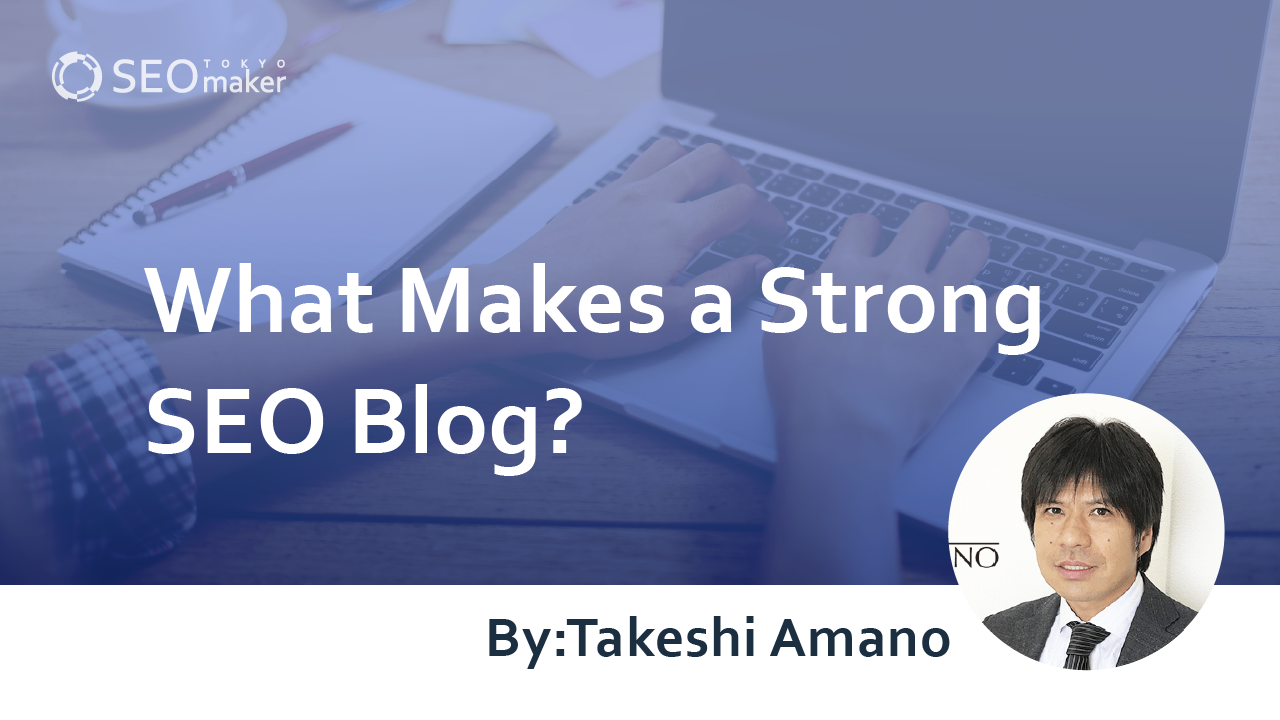What Makes a Strong SEO Blog? Explaining the Best Writing Practices
contents

Have you started a blog only to find it doesn’t appear at the top of search results, struggling to increase traffic? You’re not alone.
Websites that rank highly in search results invariably implement SEO strategies. While SEO might seem daunting, in today’s world where content creation is more accessible, it’s indispensable.
In this article, we will discuss the characteristics of a strong SEO blog and the key points for achieving high rankings. If you’re a beginner, make sure to also check out our guide on SEO writing: What is it? Tips and Tricks for SEO-minded writing.
Why is SEO Necessary for Blog Sites?
There are numerous reasons why your blog needs SEO, but simply put, it increases site visits. Essentially, SEO is about optimizing your site to rank higher in search engine results. Ultimately, sites that are highly valued by search engines are considered strong in SEO.
Search engines prioritize user convenience, striving to be the go-to engine for many.
A user-first site is highly valued
A user-first site is highly valued because if users find content irrelevant to their search, they’ll stop using the search engine.
Naturally, search engines aim to elevate information that users want or need to the top of their search results.
A strong SEO site, therefore, is one that considers the user’s convenience, hosting content that users are seeking. While there are many technical SEO tactics, the most crucial aspect is a user-first approach.
Basic SEO Tips for Blogs
So, what can you do to make your site user-first and also favorable to search engines? It’s important to have a website that prioritizes the user while also being favorable to search engines.
I will explain the basic SEO strategies for blogs, including whether the site structure is appropriate.
-Setting up navigation menus
-Installing breadcrumb lists
-Simple hierarchical structure
-Maintaining XML sitemaps
-Clear URLs
Navigation menus act as a table of contents for websites, linking to each content page. They not only make it easier for users to find the information they want but also help search engines understand the importance of blog content.
However, simply having a navigation menu is not enough. If it is not set up clearly, users may not find the information they seek and leave the site. Therefore, it’s important to place the navigation menu in the same location on all pages and organize it into clear categories.
Breadcrumb lists are visual cues that show users where they are on a site. Simply put, they indicate a user’s current location on a website.
Websites have a hierarchical structure, starting from broad categories and narrowing down to more specific ones.
Breadcrumbs help indicate the relationship between different pieces of content, enhancing site navigation for visitors and facilitating crawler indexing, which aids search engines in understanding and evaluating the site.
From an SEO perspective, this structure means that links from lower pages funnel up to higher pages, making it easier to boost the search engine ranking of those upper pages.
Simple Hierarchical Structure
A simple hierarchical structure refers to a layout that allows users to navigate easily through all the pages of a blog with few clicks.
This straightforward structure ensures that users can quickly find the page with the information they need, enhancing user convenience much like navigation menus and breadcrumbs do.
Furthermore, a simple hierarchy helps crawlers understand the overall blog structure. Since crawlers index pages by following internal links, a simple structure makes it easier to grasp the site’s layout, which can improve its SEO rating.
XML Sitemap Maintenance
An XML sitemap is a file in XML format that describes each page on a website, including URLs, priorities, last modified dates, and change frequencies. Having an XML sitemap encourages search engine crawlers to navigate through the site.
While having a sitemap does not guarantee that all pages will be crawled and indexed, it provides valuable information to search engines without any downside.
Similarly, installing an XML sitemap doesn’t directly lead to higher search rankings, but it does make crawling more efficient, which is beneficial for SEO.
Focus on User-Friendly URLs
By creating clear and intuitive URLs, users can understand the general content of a page just by looking at the URL. Moreover, structuring URLs based on categories or file names can effectively organize content within your blog.
Clear URLs not only enhance user convenience but are also beneficial for crawlers. Like humans, crawlers prefer simple and understandable URLs, making it easier for search engines to find and index pages.
While having an XML sitemap doesn’t directly lead to top rankings, it is a significant advantage for SEO.
SEO Tips for Individual Blog Posts
So far, we’ve discussed SEO strategies that can be applied across your site. However, it’s also necessary to apply specific strategies to each individual post. Here, we’ll explain SEO tips applicable to individual blog posts.
-Creating unique and comprehensive article content
-Optimizing word count
-Optimizing header tags and titles
-Optimizing anchor text
-Optimizing the use of images
With a user-first approach, make sure to focus on the factors that lead to high ratings from search engines.
Creating Unique and Comprehensive Article Content
For a blog to rank high, it’s crucial that its content is not only desired by users but also offers unique value not found on other blogs. This means focusing on both comprehensiveness and uniqueness.
Comprehensiveness refers to how fully information related to a keyword is covered. Users often seek varied meanings for a single keyword, so it’s vital to comprehensively cover the information they are searching for.
As for uniqueness, because a simple search can yield numerous results, creating similar content to others means your blog offers no additional value. To create valuable content for users, it’s essential to incorporate unique elements into your content.
Optimizing Word Count
Having a high word count doesn’t necessarily equate to higher search rankings. While there is a tendency for longer content to appear at the top, this is not a direct result of the word count itself. Instead, content tends to rank higher because it comprehensively covers information in a thorough manner.
However, increasing word count solely for the sake of comprehensiveness isn’t enough. The content must be easy to read and understand for the user. Good articles for users are also ideally rated by search engines. Therefore, it’s crucial to maintain an easily readable word count.
Optimizing Headings and Titles
Headings and titles are essential as they quickly convey the content’s subject to users. Proper use of heading tags not only aids users but also helps crawlers identify the key points of a blog easily.
Additionally, users often skim rather than read every word. Including strategic keywords in headings and titles can help users quickly understand the content of the blog. However, including keywords unnaturally is ineffective, so optimization should always consider a user-first approach.
Optimizing Anchor Text
Anchor text refers to the text used for links to other web pages. It serves as a crucial element that conveys information about the linked page to both users and crawlers. This anchor text should be concise and clear enough to instantly reveal the content of the linked page.
For example, anchor texts like “click here” can be unclear to users, so phrases that immediately communicate the content are preferable. Additionally, formatting the text clearly as a link, keeping it short and concise, and ensuring the link is not broken are optimizations that can enhance usability.
Optimizing Image Use
Search engine crawlers can determine what images depict based on alternative texts and image file names. Therefore, it’s necessary to provide detailed content information to crawlers using text data associated with images.
Using images effectively in a blog can provide users with an optimal search experience. Thus, aspects like image size, quality, and loading speed are critical; any discomfort might lead to users leaving the site. Optimizing images, just as with text, can bring SEO benefits.
Summary
To rank higher in search engines, a blog must implement various SEO strategies. Proper SEO can improve search rankings and increase blog traffic. The most crucial aspect of blog SEO is considering the convenience of the searcher, i.e., a user-first approach. By focusing on user-first, your blog will naturally earn favorable evaluations from search engines. As ranking a blog becomes increasingly challenging, implementing correct SEO strategies is essential.









![What is a Description? Explaining the Meaning, Writing Style, and Changing Word Count – [2023 Edition]](https://www.switchitmaker2.com/en/wp-content/uploads/2024/09/what-is-description.webp)










